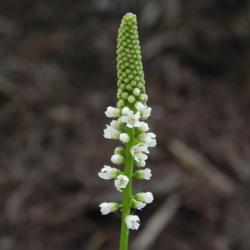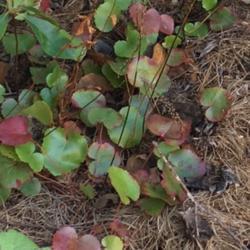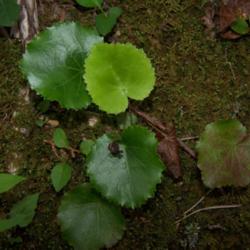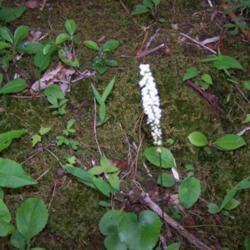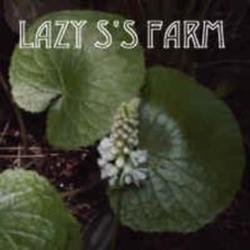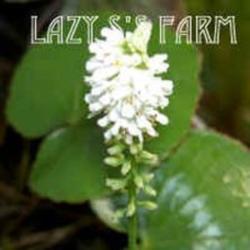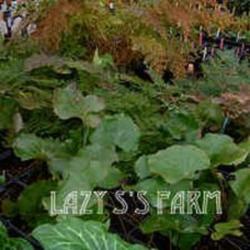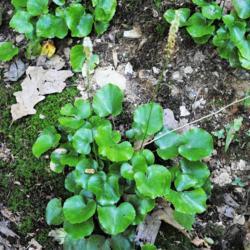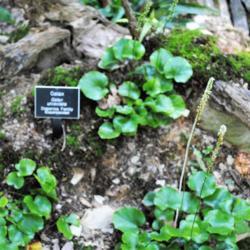| Plant Habit: | Herb/Forb |
| Sun Requirements: | Partial or Dappled Shade |
| Water Preferences: | Mesic Dry Mesic Dry |
| Soil pH Preferences: | Strongly acid (5.1 – 5.5) Moderately acid (5.6 – 6.0) Slightly acid (6.1 – 6.5) |
| Minimum cold hardiness: | Zone 6a -23.3 °C (-10 °F) to -20.6 °C (-5 °F) |
| Maximum recommended zone: | Zone 7b |
| Plant Height: | 1 to 2 feet |
| Plant Spread: | 2 or more feet, spreading |
| Leaves: | Evergreen |
| Flowers: | Showy |
| Flower Color: | White |
| Bloom Size: | Under 1" |
| Flower Time: | Late spring or early summer |
| Inflorescence Height: | 1 to 2 feet |
| Foliage Mound Height: | 3 to 6 inches |
| Underground structures: | Rhizome |
| Propagation: Seeds: | Sow in situ |
| Propagation: Other methods: | Cuttings: Stem Division Stolons and runners |
| Miscellaneous: | Monoecious |
